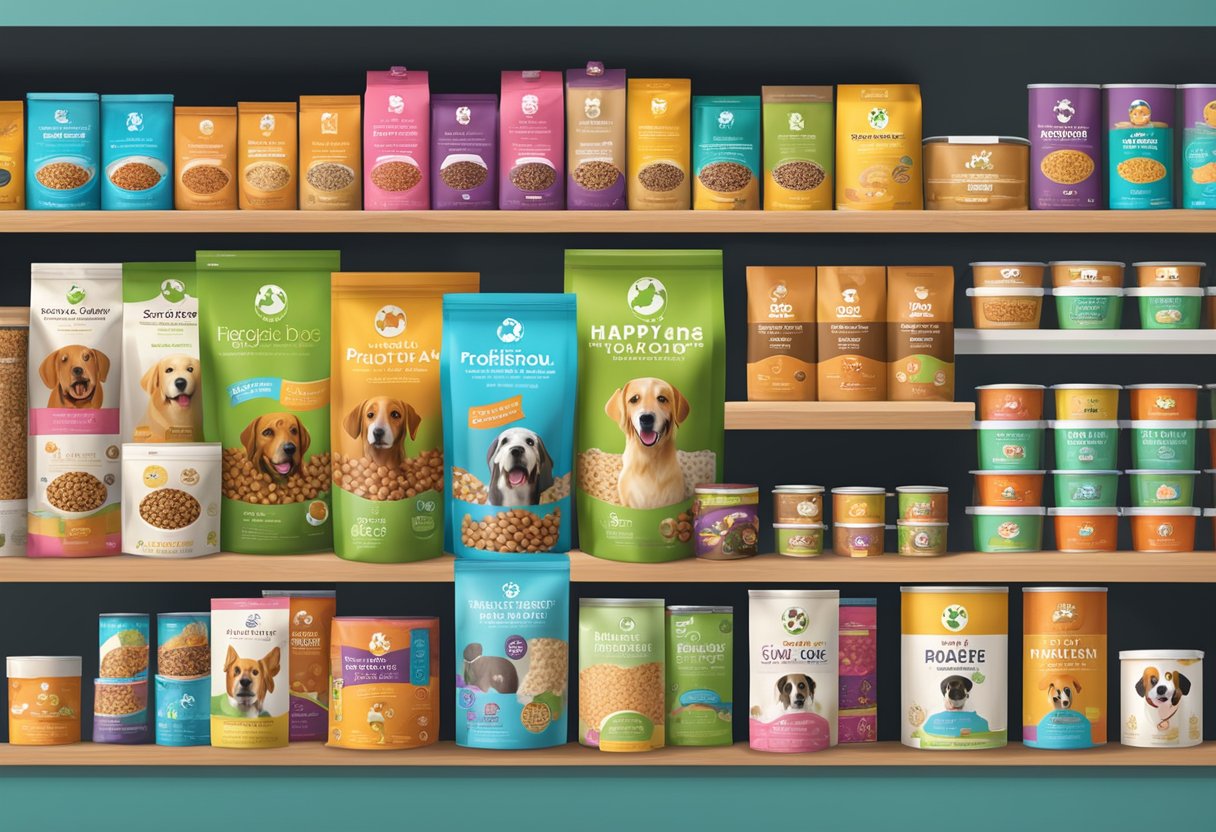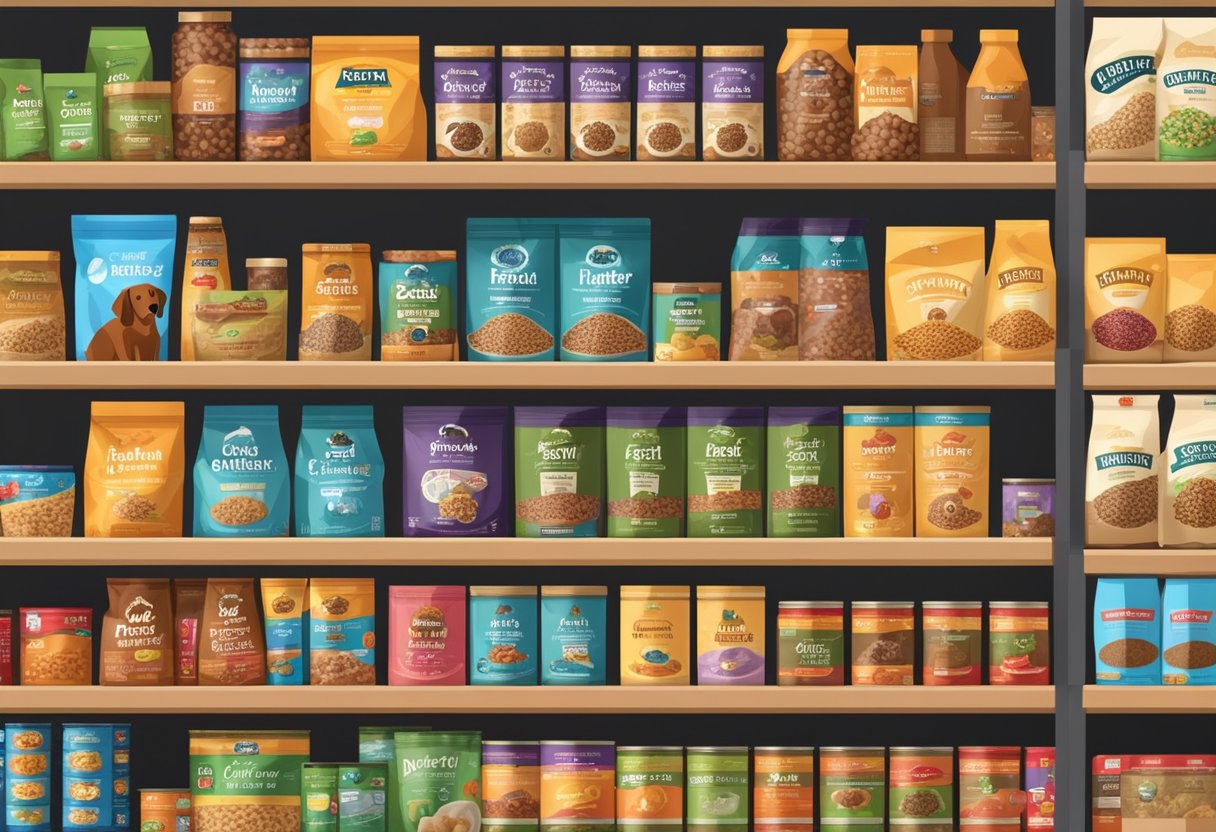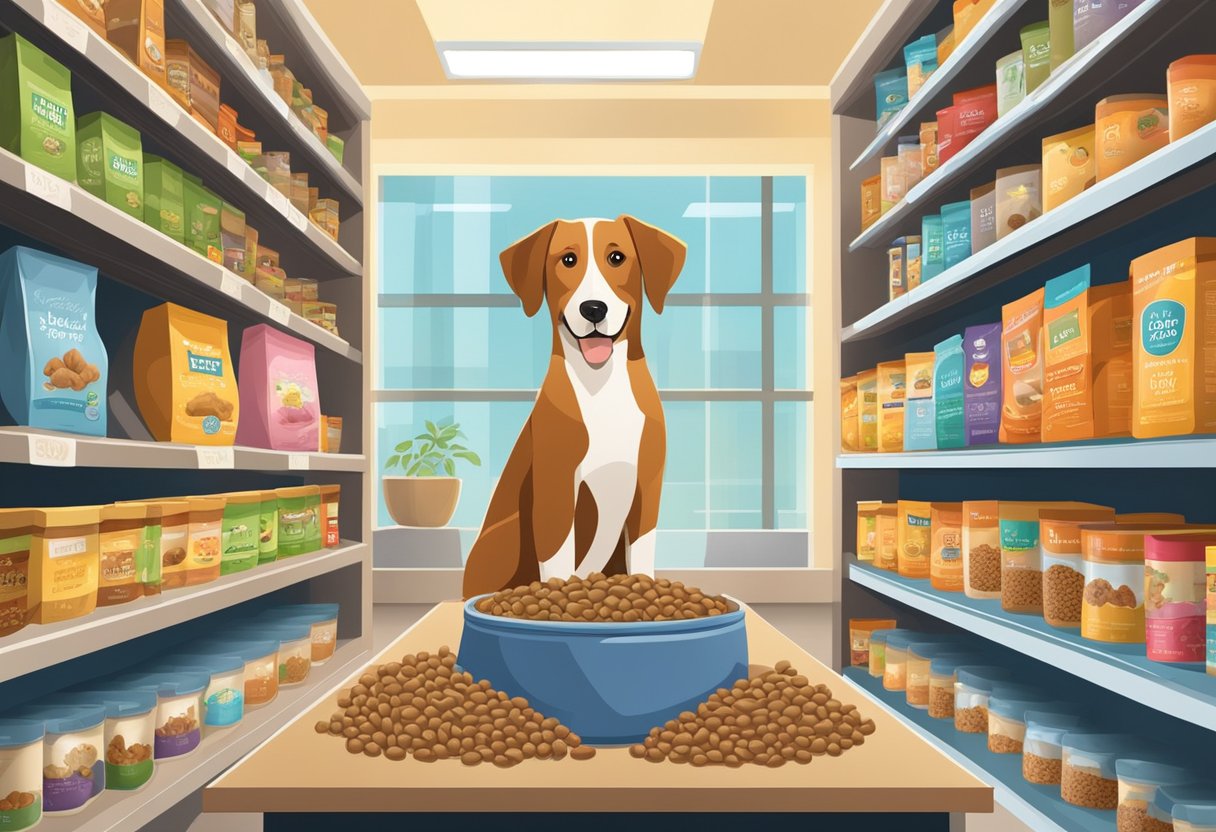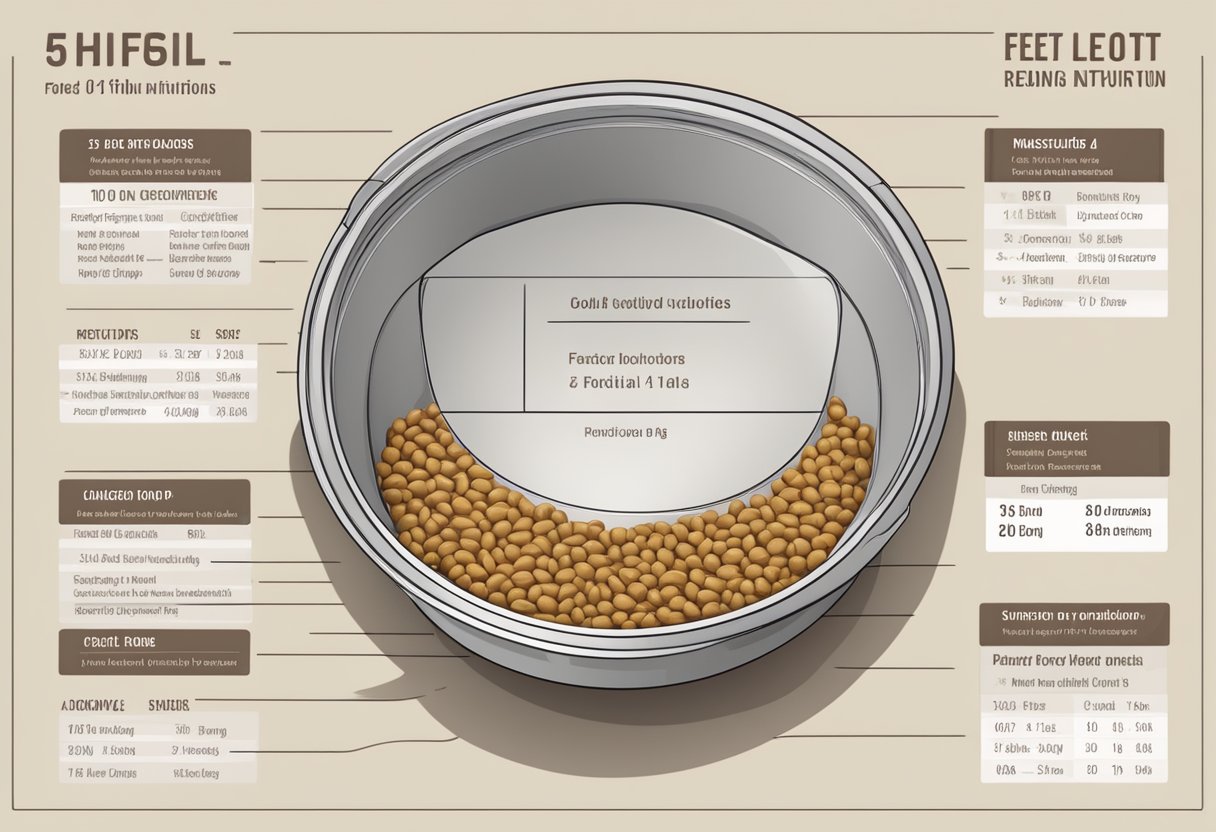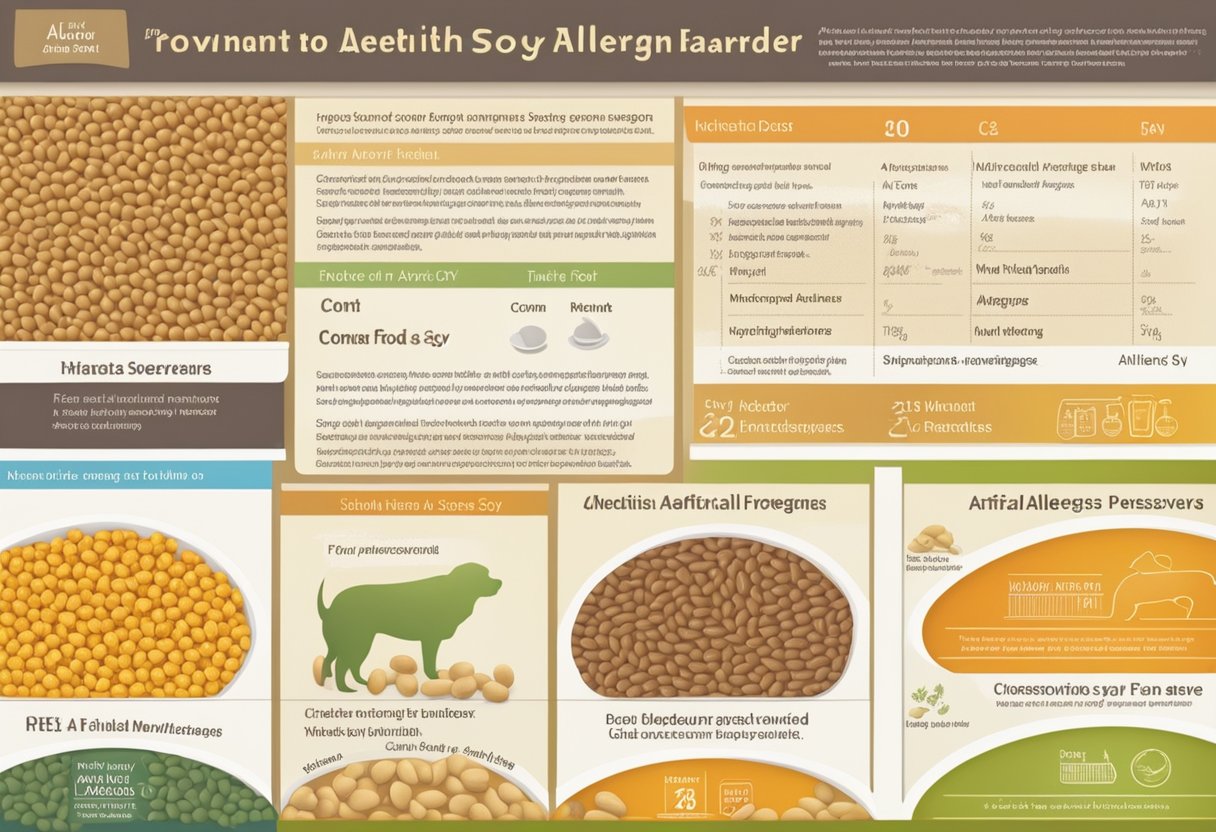What is the Best Dog Food: A Comprehensive Guide to Choosing the Right Nutrition for Your Canine
Dog owners want to ensure that their furry friends are healthy and happy, and one of the ways to achieve this is by feeding them the best possible food. With so many dog food brands and types available, it can be challenging to determine which one is the best. The answer to the question, “what is the best dog food?” is not straightforward as it depends on several factors.
One of the most important factors to consider when choosing dog food is the dog’s age, breed, and size. Puppies have different nutritional needs than adult dogs, and large breeds have different requirements than small breeds. Another factor to consider is the dog’s health condition, as some dogs may have allergies or require a special diet due to a medical condition. Additionally, the quality of the ingredients and the manufacturing process of the dog food can also impact its nutritional value.
Understanding Dog Nutrition
When it comes to feeding your furry companion, understanding their nutritional needs is crucial. A well-balanced diet can help maintain a healthy weight, improve digestion, and boost their overall well-being. Here are some key factors to consider when it comes to dog nutrition.
Macronutrients for Dogs
Macronutrients are the building blocks of a healthy diet. Dogs require three main macronutrients: protein, fat, and carbohydrates. Protein is essential for building and repairing tissue, while fat provides energy and helps absorb vitamins. Carbohydrates are a good source of fiber, which can aid in digestion. A good dog food should contain a balance of all three macronutrients.
Vitamins and Minerals
In addition to macronutrients, dogs also require a variety of vitamins and minerals to maintain optimal health. Vitamins such as A, D, E, and K are essential for proper growth and development, while minerals such as calcium, phosphorus, and potassium are important for strong bones and teeth. A well-balanced dog food should contain a variety of vitamins and minerals to support overall health.
The Role of Water in Canine Diets
Water is an essential nutrient for dogs, as it helps regulate body temperature, aids in digestion, and flushes toxins from the body. It is important to ensure that your dog has access to clean, fresh water at all times. Additionally, wet dog food can provide additional hydration, which can be beneficial for dogs who do not drink enough water.
Overall, understanding dog nutrition is key to providing your furry friend with a healthy and balanced diet. By ensuring that their diet contains a balance of macronutrients, vitamins, and minerals, and providing them with access to clean water, you can help support their overall health and well-being.
Types of Dog Food
When it comes to choosing the best dog food, it’s important to consider the different types of dog food available. Each type has its own advantages and disadvantages, and some may be more suitable for certain dogs than others.
Dry Dog Food
Dry dog food, also known as kibble, is one of the most popular types of dog food. It’s convenient, easy to store, and can be left out for your dog to eat throughout the day. Dry dog food is also generally more affordable than wet dog food and can help keep your dog’s teeth clean by scraping away plaque and tartar.
However, some dry dog foods may contain fillers and artificial ingredients, so it’s important to read the label carefully and choose a high-quality brand. Additionally, some dogs may have trouble digesting dry dog food, especially if they have dental issues or are prone to choking.
Wet Dog Food
Wet dog food, also known as canned dog food, is another popular option. It’s typically more expensive than dry dog food, but it’s also more palatable and can be easier for some dogs to digest. Wet dog food is also a good option for dogs who need to gain weight or have trouble eating due to dental issues.
However, wet dog food can spoil quickly once opened and may not be as convenient to store as dry dog food. It also doesn’t have the teeth-cleaning benefits of dry dog food.
Raw and Fresh Foods
Raw and fresh foods, such as raw meat, fruits, and vegetables, are becoming increasingly popular among dog owners. These types of foods are often considered more natural and may provide more nutrients than processed dog foods.
However, raw and fresh foods can be expensive and may not be suitable for all dogs. They also require careful handling to prevent the risk of bacterial contamination.
Specialized Diets
Some dogs may require specialized diets due to health issues or allergies. For example, dogs with kidney problems may need a low-protein diet, while dogs with food allergies may need a hypoallergenic diet.
There are many specialized diets available, including prescription diets recommended by veterinarians. It’s important to choose a specialized diet that meets your dog’s specific needs and is made with high-quality ingredients.
Choosing the Right Dog Food
Choosing the right dog food is essential for your furry friend’s overall health and well-being. With so many options available in the market, finding the best dog food can be a daunting task. Here are some factors to consider when choosing the right dog food:
By Life Stage
Dogs have different nutritional requirements at different stages of their lives. Puppies, adult dogs, and senior dogs have different nutritional needs. Puppies require more calories and protein to support their growth and development, while senior dogs need fewer calories and more fiber to maintain their weight and digestive health. Choosing a dog food that is formulated to meet your dog’s life stage is crucial to ensure they get the targeted nutritional support they need.
For Specific Health Issues
Some dogs may have specific health issues that require special dietary considerations. For example, dogs with food allergies or sensitivities may require a limited ingredient diet. Dogs with kidney or liver disease may need a low-protein diet, while dogs with diabetes may require a low-carbohydrate diet. If your dog has any specific health issues, consult with your veterinarian to determine the best diet for them.
Reading Dog Food Labels
Reading dog food labels can be overwhelming, but it is essential to choose the right dog food. Look for dog foods that list whole food ingredients such as meat, vegetables, grains, and fruits. Avoid dog foods that contain fillers, by-products, and artificial preservatives. The first ingredient listed on the label should be a high-quality source of protein, such as chicken, beef, or fish.
Ingredient Quality and Sources
The quality and sources of the ingredients in dog food can vary greatly. Look for dog foods that use high-quality sources of protein, such as whole meat, fish, or poultry. Avoid dog foods that use meat by-products or unnamed meat sources. It’s also important to consider where the ingredients come from. Choose dog foods that use locally sourced and sustainable ingredients whenever possible.
By considering these factors, pet owners can choose the right dog food that meets their pet’s nutritional needs and supports their overall health and well-being.
Feeding Guidelines and Portions
Choosing the right dog food is only half the battle. It is also important to feed your dog the right amount of food. Overfeeding can lead to obesity, while underfeeding can result in malnutrition. The amount of food your dog needs depends on several factors such as age, weight, breed, and activity level.
Most dog food brands provide feeding guidelines on the packaging. These guidelines are based on the average needs of a healthy adult dog. However, it is important to note that not all dogs are the same. Some may require more or less food than what is recommended.
To determine the appropriate amount of food for your dog, it is best to consult with a veterinarian. They can assess your dog’s specific needs and recommend a feeding plan that is tailored to their individual requirements.
In general, puppies require more frequent feedings than adult dogs. Small breed puppies may need to be fed up to four times a day, while larger breed puppies can be fed three times a day. Adult dogs typically need to be fed once or twice a day, depending on their activity level and individual needs.
When feeding your dog, it is important to measure out the appropriate portion size. Overfeeding can lead to weight gain and other health problems, while underfeeding can result in malnutrition. Use a measuring cup or kitchen scale to ensure that you are feeding your dog the right amount of food.
By following these feeding guidelines and portions, you can help ensure that your dog is getting the nutrition they need to stay healthy and happy.
Common Allergens and Ingredients to Avoid
When it comes to choosing the best dog food, it’s important to be aware of common allergens and ingredients that may cause adverse reactions in dogs. Some of the most common allergens include beef, chicken, dairy, wheat, soy, and corn.
To avoid these allergens, consider looking for dog foods that are labeled as hypoallergenic or limited ingredient diets. These types of foods typically exclude common allergens and use alternative protein sources such as lamb, fish, or duck.
In addition to allergens, there are also certain ingredients that should be avoided in dog food. These include artificial preservatives, colors, and flavors, as well as by-products and fillers. Look for dog foods that use natural preservatives such as Vitamin E and C, and avoid foods that contain by-products such as chicken by-product meal or meat by-products.
It’s also important to pay attention to the quality of the ingredients in dog food. Look for foods that use whole ingredients such as whole meats, fruits, and vegetables, rather than processed or refined ingredients.
By being aware of common allergens and ingredients to avoid, pet owners can make informed decisions when choosing the best dog food for their furry friends.
The Impact of Diet on Dog Behavior
A dog’s diet can have a significant impact on their behavior. Proper nutrition is essential for a dog’s overall health and well-being, including their mental health. A well-balanced diet that includes all the necessary nutrients can help a dog maintain a healthy weight, have more energy, and improve their mood and temperament.
Dogs that consume high-quality food with essential nutrients tend to be more content, relaxed, and less prone to mood swings. On the other hand, dogs fed a low-quality diet might display signs of irritability, anxiety, or restlessness due to the lack of necessary nutrients in their diet.
Moreover, fatty acids, especially DHA, are crucial for brain development and can affect cognitive performance and behavior. A study published in Psychology Today suggests that dogs diagnosed with Cognitive Dysfunction Syndrome (CDS), similar to Alzheimer’s Disease in humans, have a slower cognitive decline when fed a diet rich in antioxidants, vitamins, and minerals.
It’s important to observe a dog’s behavior and consider their diet in relation to the specific problem. However, diet is just one component that can impact behavior, and it’s always a good idea to consult a veterinarian if a dog’s behavior changes suddenly or drastically.
Evaluating Dog Food Brands
When it comes to choosing the best dog food for your furry friend, it’s important to evaluate the brand carefully. Here are some key factors to consider:
Reputation and Reviews
One of the most important things to look for in a dog food brand is a good reputation. A reputable brand will have a history of producing high-quality dog food that meets the nutritional needs of dogs. You can research dog food brands by reading reviews from other dog owners, talking to your veterinarian, and checking out online forums and social media groups for dog lovers.
Recall History
Another important factor to consider when evaluating dog food brands is their recall history. Unfortunately, even the best dog food brands can sometimes have issues with contamination or other problems that require a recall. However, a brand that has a history of multiple recalls should be a red flag. You can check the FDA’s website for a list of dog food recalls to see if the brand you’re considering has had any issues in the past.
Manufacturing Processes
Finally, it’s important to consider the manufacturing processes used by the dog food brand. Look for a brand that uses high-quality ingredients and has strict quality control measures in place. You may also want to consider whether the brand sources its ingredients from the United States or from other countries. Some dog owners prefer to buy dog food that is made in the USA to ensure that the ingredients are safe and of high quality.
In summary, when evaluating dog food brands, it’s important to consider their reputation and reviews, recall history, and manufacturing processes. By doing your research and carefully evaluating each brand, you can choose the best dog food for your furry friend.
Homemade Dog Food Considerations
Making homemade dog food can be a great way to ensure that your furry friend is getting the best nutrition possible. However, there are several important considerations to keep in mind before embarking on this journey.
Nutritional Balance
It is crucial to ensure that homemade dog food is nutritionally balanced. This means that the food should contain the right balance of protein, fat, and carbohydrates, as well as essential vitamins and minerals. It is recommended to consult with a veterinarian or a veterinary nutritionist to ensure that the homemade dog food is nutritionally complete.
Quality of Ingredients
The quality of ingredients used in homemade dog food is also important. It is recommended to use high-quality, fresh ingredients and to avoid using any ingredients that are toxic to dogs. Some common ingredients that should be avoided include chocolate, onions, garlic, and grapes.
Food Safety
Food safety is another important consideration when making homemade dog food. It is important to follow proper food safety practices, such as washing hands and surfaces, cooking food to the appropriate temperature, and storing food properly. Homemade dog food should also be consumed within a certain timeframe to ensure freshness and prevent spoilage.
Cost
Homemade dog food can be more expensive than commercial dog food, depending on the ingredients used. However, it is possible to make homemade dog food on a budget by using affordable ingredients and buying in bulk. It is important to keep in mind that the cost of homemade dog food may vary depending on the dog’s size and nutritional needs.
Overall, making homemade dog food can be a great way to provide your furry friend with high-quality nutrition. However, it is important to keep in mind the considerations mentioned above to ensure that the food is nutritionally balanced, made with high-quality ingredients, safe to consume, and within your budget.
Transitioning to a New Dog Food
Switching your dog’s food can be a daunting task, but it doesn’t have to be. The key to a successful transition is to do it gradually. Abruptly switching to a new dog food can cause digestive upset, including diarrhea and vomiting.
Most veterinarians and pet nutritionists recommend transitioning your dog’s food over a period of 7-10 days. During this time, you will gradually introduce the new food while decreasing the old food.
Here is a sample transition plan that you can follow:
| Day | Old Food | New Food |
|---|---|---|
| 1-2 | 75% | 25% |
| 3-4 | 50% | 50% |
| 5-6 | 25% | 75% |
| 7 | 0% | 100% |
On days 1-2, feed your dog 75% of their old food and 25% of the new food. On days 3-4, feed your dog 50% of each food. On days 5-6, feed your dog 25% of the old food and 75% of the new food. Finally, on day 7 and beyond, feed your dog 100% of the new food.
It’s important to monitor your dog’s stool during the transition period. Loose stool or diarrhea may indicate that the transition is happening too quickly, and you may need to slow down the process.
It’s also important to note that not all dogs will tolerate a new food, even if the transition is done gradually. If your dog experiences persistent digestive upset, consult with your veterinarian to determine if a different food is necessary.
In summary, transitioning to a new dog food should be done gradually over a period of 7-10 days. Monitor your dog’s stool during the transition and consult with your veterinarian if persistent digestive upset occurs.
When to Consult a Veterinarian
Choosing the best dog food for your furry friend can be a daunting task. With so many options available, it can be difficult to know where to start. While researching and reading reviews can be helpful, consulting with a veterinarian is always recommended.
A veterinarian can help you determine the best type of food for your dog based on their breed, age, weight, and overall health. They can also provide guidance on the appropriate portion sizes and feeding schedule.
If your dog has any health issues such as allergies, digestive problems, or kidney disease, a veterinarian can recommend a specialized diet to address those issues. They can also advise you on which ingredients to avoid and which ones are beneficial for your dog’s health.
In addition to consulting with a veterinarian, it’s important to pay attention to your dog’s behavior and overall health. If you notice any changes in their appetite, energy level, or stool consistency, it may be a sign that their current diet isn’t working for them. In that case, it’s best to consult with a veterinarian to make any necessary adjustments to their diet.
Overall, while researching and reading reviews can be helpful, consulting with a veterinarian is the best way to ensure that your dog is getting the best nutrition possible. They can provide personalized recommendations based on your dog’s individual needs and help you make informed decisions about their diet.
Frequently Asked Questions
Which dog food brands are recommended by veterinarians?
There are several dog food brands that are highly recommended by veterinarians, including Hill’s Science Diet, Royal Canin, and Purina Pro Plan. These brands have been formulated with the help of veterinarians and are designed to provide balanced nutrition for dogs of all ages and sizes.
What are the top-rated dry dog foods for adult dogs?
Dry dog foods are a popular choice for many dog owners because they are convenient and easy to store. Some of the top-rated dry dog foods for adult dogs include Orijen Adult Dog Food, Blue Buffalo Life Protection Formula Adult Dog Food, and Taste of the Wild High Prairie Canine Formula. These brands have been highly rated by both veterinarians and dog owners for their quality ingredients and balanced nutrition.
How do I choose the healthiest food for my dog?
Choosing the healthiest food for your dog can be a daunting task, but there are a few things you can look for to ensure that you are making the best choice. Look for high-quality ingredients, such as whole meats, fruits, and vegetables, and avoid foods that contain fillers or by-products. It’s also important to choose a food that is appropriate for your dog’s age, size, and activity level.
What are the benefits of feeding my dog Royal Canin?
Royal Canin is a popular dog food brand that is recommended by many veterinarians. This brand offers a wide range of dog food formulas that are designed to meet the specific nutritional needs of different breeds, sizes, and ages of dogs. Some of the benefits of feeding your dog Royal Canin include improved digestion, healthy skin and coat, and increased energy levels.
Are there any dog food brands that professionals suggest avoiding?
There are some dog food brands that professionals suggest avoiding, including those that contain artificial preservatives, colors, and flavors, as well as those that contain fillers or by-products. Some of the brands that are often recommended to avoid include Ol’ Roy, Kibbles ‘n Bits, and Beneful.
What constitutes the number 1 healthiest dog food on the market?
There is no one-size-fits-all answer to this question, as the healthiest dog food for your dog will depend on their individual needs and preferences. However, some of the top-rated and most highly recommended dog food brands include Blue Buffalo, Orijen, and Taste of the Wild. These brands are known for their high-quality ingredients and balanced nutrition, and are a great choice for many dogs.
